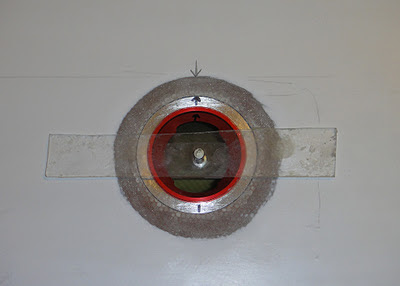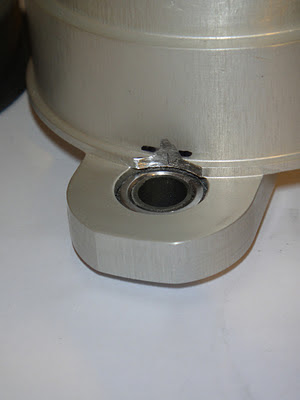I took the plunge and bonded in the fuel filler recess.
I'm glad I didn't try to do it the other night as there was quite a bit more prep work that I needed to do first. Basically sanding areas that need to bond with the flock and making sure the honeycomb is well out of the way so the flock will fill in the void in the wing skins. I did all this by hand as I find the Dremel a bit out of control for such a delicate task.
Before starting I laid in a polythene sheet inside the tank to catch any spills of flock or anything else that might fall in there.
I then spent quite a bit of time pushing flock into the space between the tank and the inside wing skin. This is the critical junction that has to be fuel tight when complete.
After that it was putting a heap of flock in the honeycomb void and on the cap recess itself.
All seemed to go okay.
A couple of nights later I put the reinforcing glass fabric over the outside which bonds the top outside edge of the recess with the wing. I used a Rotary cutter to cut out the fabric - it works a treat. Much better than scissors - especially when going round corners. I bought mine for less than £12 on eBay - I highly recommend you get one of these. I used a roll of duct tape to mark out the outer dimension and the fuel cap turned upside down to mark the inner hole - this worked out perfect.
Just gotta wait for everything to dry now and then I'll remove the black tape that was protecting the inner anodised area of the recess. To finish the job it will need sanding to make everything flush with the wing surface - I'll have to use a bit of filler here - which I don't have at the moment - so this job will be done much later.
 |
| Polythene sheet laid inside wing to protect tank |
 |
| Lotsa flock |
 |
| With perspex tool in place to hold at right height |
 |
| With glass reinforcing in place |
 |
| Rotary cutter - get one! |















































